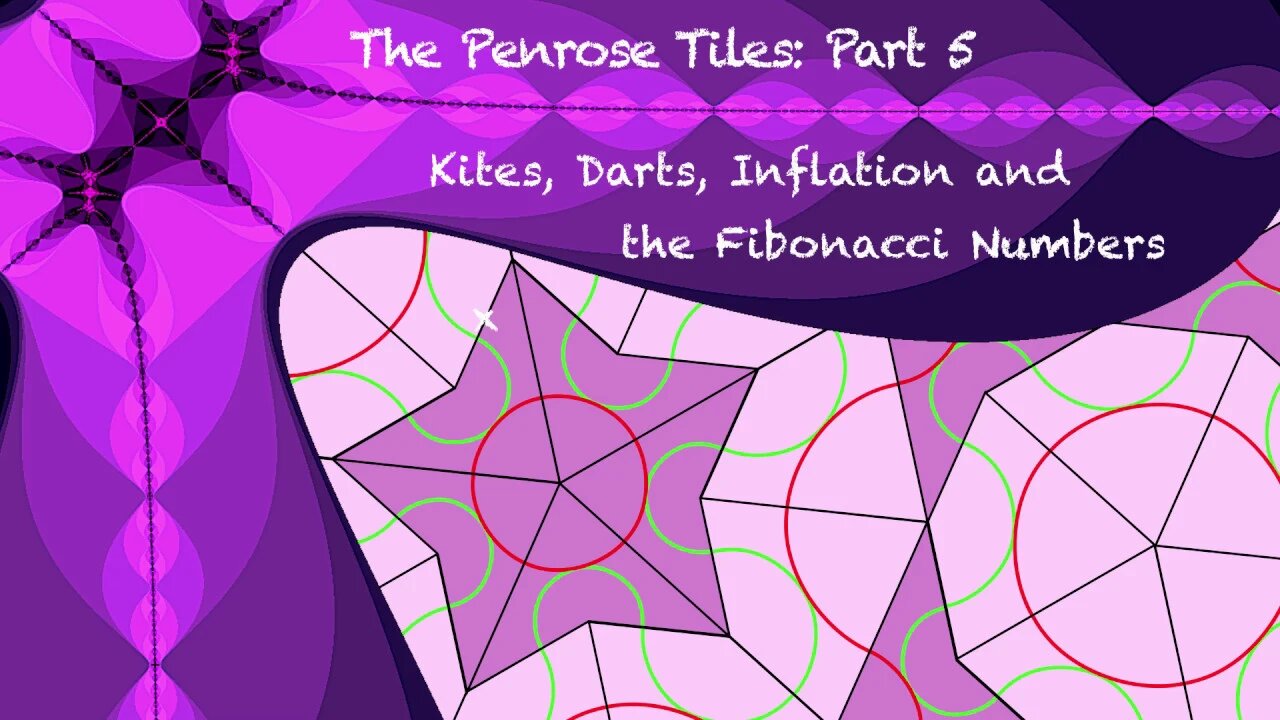Premium Only Content

Penrose Tiles Part 5 - Kites, Darts, Inflation, Fibonacci Numbers and the Golden Ratio
https://mistercorzi.scot/pdf/cut-out.pdf Print on card and cut out to create a set of Penrose tiles. Attempting to create a Penrose tiling is the best way to become familiar with the Dart and the Kite tiles.
In this 5th video the process of inflation is investigated using a Kite as the starting tile. The first 3 iterations are explored in some detail with the focus being on the number of Kites and Darts after each iteration. From the number patterns that are revealed a generalisation is made concerning the ratio of Kites to Darts. When infinite Penrose tilings are considered then the Golden Ratio emerges from the mathematical analysis. The fact that this is an irrational number allows the conclusion that the set of Penrose tiles (Kite and Dart) are an aperiodic set of tiles
The previous four videos gave step by step instructions on how to use the free Open Source Inkscape software to geometrically construct the Penrose Tiles and explore some basic configurations.
The Penrose Tiles were discovered by Roger Penrose in 1974. The two tiles used in these videos were named by John Conway "Kite" and "Dart". They can tile the plane but only in a non-periodic way and are called an aperiodic set of tiles for this reason.
If you attempt a tiling with the Penrose Tiles as you build a larger and larger region you soon find places where no tile will fit. You will need to unpick some of your tiling before you can proceed further.
It has been said of these tilings:
"most patterns, like the universe, are a mystifying mixture of order and unexpected deviations from order. As the patterns end, they seem to be always striving to repeat themselves but never quite managing it".
-
 3:01:28
3:01:28
PandaSub2000
18 hours agoDEATH BET w/MrMatthews + GAME BOY! (Edited Replay)
18K2 -
 LIVE
LIVE
Ashaelon
7 hours ago $0.04 earnedWelcome to the Harvest Zone
67 watching -
 18:07
18:07
Nikko Ortiz
1 day agoYou Laugh You Go To Hell...
92.1K19 -
 23:24
23:24
GritsGG
15 hours agoSpectating Solos! Most Winning Player Watches Random Solo Players!
9.97K1 -
 32:09
32:09
ThisIsDeLaCruz
2 days ago $8.93 earnedFalling In Reverse: Christian Thompson’s Stage Tech Revealed
62.3K12 -
 18:03
18:03
Nikko Ortiz
2 days agoEBT Meltdowns Are Insane...
64.4K147 -
 2:02:46
2:02:46
Badlands Media
1 day agoDevolution Power Hour Ep. 405: Live from Cocoa Beach
207K74 -
 1:33:56
1:33:56
Man in America
13 hours agoElon Says the Quiet Part Out Loud: AI Will RULE Humans, No More Money, BILLIONS of Robots
67.2K72 -
 51:25
51:25
The Connect: With Johnny Mitchell
14 hours ago $35.08 earnedInside The REAL Narco State: The Colombian Drug Cartels DOMINATING The Global Cocaine Trade
43.2K18 -
 3:57:53
3:57:53
MattMorseTV
11 hours ago $122.50 earned🔴Saturday Night NEWS + DRAMA.🔴
119K123